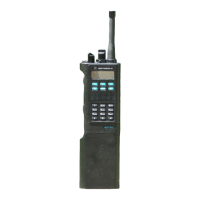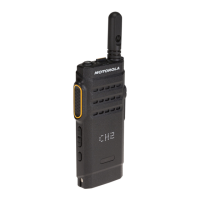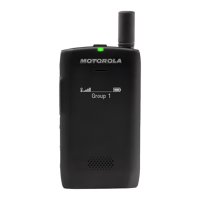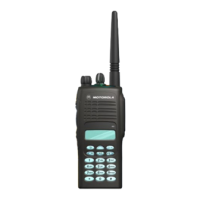95
95 General Information
Several conditions determine the distance that your radio will transmit a
clear data/voice communication. The following list describes many conditions and
their typical affect on your radio's transmitting distance.
Cleaning
Clean external surfaces of the radio with a mild detergent and a stiff, non-
metallic, short-bristled brush. A suitable detergent solution may be mixed by
adding one teaspoon of mild dishwashing detergent to one gallon of water (0.5%
solution). Apply the detergent solution sparingly with the brush, being careful not
to allow excess detergent to remain entrapped near connectors and controls or
in cracks and crevices. Do not submerse the radio in the detergent solution. Dry
the radio thoroughly with a soft, lint-free cloth.
Clean all battery contacts with a lint-free cloth to remove dirt, grease, or
other foreign material that may prevent good electrical connections.
Handling
Avoid physical abuse; do not pound, drop, or throw the radio
unnecessarily. Do not carry the radio by the antenna.
Avoid subjecting the radio to an excess of liquids. Never allow the radio
to become submersed.
Avoid subjecting the radio to corrosives, solvents, or spirits.
Do not disassemble the radio in any way. Keep the connector cover in place
radio's power more power longer distance
radio's frequency lower frequency (VHF compared to UHF) longer distance
radio's tuning properly tuned radio (on frequency, more power) longer distance
stormy weather adverse atmospheric conditions shorter distance
at sea better ground plane (clearer line-of-sight) longer distance
city large/tall buildings (interference problems) shorter distance
in a building structural boundaries (interference problems) shorter distance
on a tall building's roof less interference (clearer line-of-sight) longer distance
in a subway below ground level (interference problems) shorter distance
on top of a hill less interference (clearer line-of-sight) longer distance
intervening hills more interference (no line-of-sight) shorter distance
inside a vehicle metal structure (interference problems) shorter distance
Condition Description Effect

